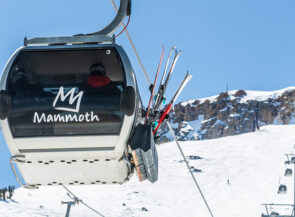A former Savannah resident returns the South’s Hostess City to understand the influence of its port
If someone had asked me, while I lived in Savannah, what I thought was the most interesting job in this haunted, beautiful, colorful Georgia city, I might have said it belongs to a shrimp boat captain victoriously unloading their catch at Lazaretto Creek, to a groundskeeper at Bonaventure Cemetery tending camellias around Johnny Mercer’s grave, or perhaps to a bartender at Pinkie Masters. Only after moving away did I learn about a gig that requires pirate-like skills, offers lots of time on the water, and may pay upward of half a million dollars per year: the job of river pilot.
If you’ve ever looked out at the Savannah River and watched the cargo ships—hulking vessels, stacked stories tall, like children’s toys, with rainbow columns of shipping containers, tugboats zipping around them like worker bees—you’ve seen a river pilot at work. Not just anybody can become one; in fact, few might ever get a chance to read the job listing. There are only a handful in Savannah, each a preeminent expert on the river’s turns, tides, depths, and currents (and each probably a son or nephew or grandson of a river pilot before them, having worked their way up the ranks from tugboat deckhand).
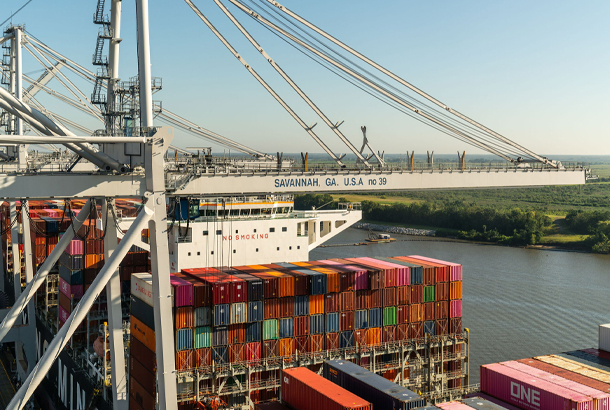
In a small craft, they travel to the end of the Savannah River’s shipping channel, some 20 miles out in the Atlantic, pull up alongside a patiently waiting cargo vessel, and make a dangerous jump, over potentially wild seas, onto a hanging rope ladder, climbing aboard and taking command to get the ship safely into port. There, after being docked by a docking pilot, the ship is greeted by longshoremen and crane operators who unload thousands of containers from about half a dozen of them per day.
I learned about this job from Edward Fulford, who works in the corporate communications office at the Georgia Ports Authority. Before Fulford took a job at the port, he was a local journalist. “I knew the ports were kind of a big deal, but I really had no idea the impact of our operation and how important we are nationally,” he tells me. “As far as volume goes, I had no idea we were the third busiest gateway in the United States.”
Georgia’s vast network of deepwater ports was established in 1945, and today the business it does in a single year—some $140 billion in sales within the state in 2021—exceeds the annual gross domestic product of the nation of Morocco. The Port of Savannah, Fulford tells me, is the state’s largest, and one of the largest in North America. Amidst tens of thousands of 20- or 40-foot shipping containers are massive ship berths and cranes that tower hundreds of feet tall and move tons of containerized cargo daily, across a campus bigger than the footprint of Savannah’s entire historic district.
Despite all this unfolding just a couple of miles from the downtown home I shared with my husband, a Savannah native, until 2021, I knew virtually nothing about the port. I never thought about it, my friends and neighbors never spoke about it, and—aside from the occasional sound of a distant foghorn or the low chug of ships’ motors as they slid quietly up the river past downtown—I never saw its influence at work. At least, I didn’t think I did.
But after a decade of visiting and then living in Savannah, curiosity about the port began lapping at the edges of my understanding of the city. In the past few years, Starland, Savannah’s arts neighborhood, has sprung up and flourished, and in 2019 developers built its centerpiece, Starland Yard, an expansive dining hall and events space made of stacked shipping containers. As the city grows and more people move here, these colorful cargo building blocks are making their way into town.
After we moved away, the Thompson Savannah hotel opened up on the river. It was far from the city’s first riverfront hotel, but it’s certainly the first to sit 100 yards back from the water with nothing but a few palm trees and some decorative shipping containers painted with the words “Eastern Wharf” between the tower’s facade and the water’s edge. This means there’s a chance to be at eye level with these gargantuan physical manifestations of mass consumption and global trade—and with a part of Savannah that is so central to the city, and has been for centuries.
As I sit at the hotel’s rooftop Bar Julian, watching Liberia’s navy blue Lyon II, or Panama’s Nord Madeira, arriving from Egypt’s Suez Canal via the Straits of Gibraltar and heading toward the Talmadge Memorial Bridge, river pilots at work, I find myself thinking differently about the world—and certainly, about the city of Savannah.
To understand the influence of Savannah’s port, Ships of the Sea Maritime Museum executive director Molly Carrott Taylor recommends rewinding a couple of centuries. The museum is an incredible source of history and knowledge not only on the port through the centuries, but also on the city’s legacy of ship-building and maritime innovation.
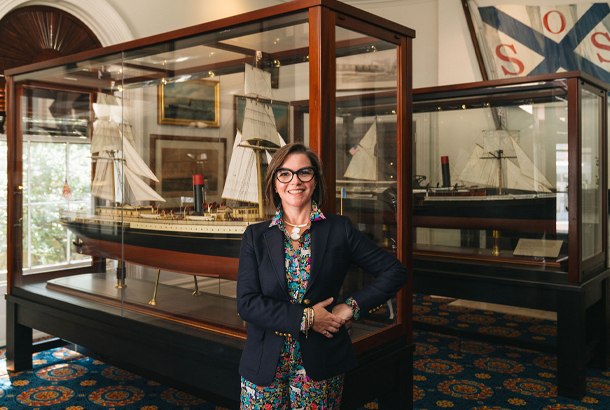
“Few people know the story of the steamship Savannah,” Carrott Taylor, herself a sailor, tells me giddily. This sailing steamship was the first such vessel to cross the Atlantic, wowing onlookers when it docked in Liverpool in 1819. Then came the ironclad warships built in Savannah during the Civil War, and the armored cargo “Liberty ships” constructed here to serve in World War II. Each was a defining achievement in the city’s cultural, social, and economic evolution—and each also influenced the course of world history.
You don’t have to dig deep into the art, artifacts, and documents at the museum to experience the city’s port and maritime history, either; you see it everywhere. Carrott Taylor points to River Street’s wrought-iron walkways, the ballast-stone-paved lanes, and the antique dolphin gutter downspouts throughout historic downtown. You might even end up having a drink at a tavern where the table-tops are made out of Liberty ship hatch doors. “The architecture is one of the biggest remnants of that maritime heyday,” she notes, “when wealthy people were making money on the transatlantic slave trade, on cotton, on rice, indigo, major mercantile products.”
These influences have touched the interiors of Savannah’s homes, too, but to spot them, you need to know where to look. When decorative arts historian Elyse Gerstenecker stepped into her role as a curator at Savannah’s Telfair Museums, including the Owens-Thomas House and Slave Quarters, two years ago, she found many locals, and even more visitors, were hardly aware of the port.
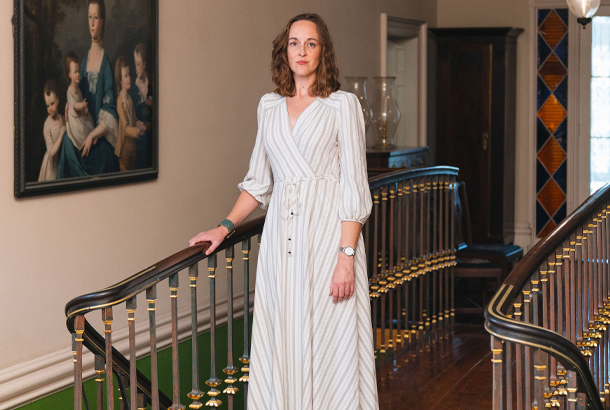
“One of the biggest things I noticed when I started here is that the sense of Savannah as part of an enormous trade network, all because of it being a shipping port, was often lost in various narratives,” she says. “I think, partially, [it’s] because of Savannah’s geographic location, up this river, not directly on the sea. Even though you’re seeing these giant cargo ships pass by, it somehow still doesn’t feel coastal. You lose that direct connection with this shipping trade.”
Gerstenecker sees this connection often, though. The Owens-Thomas House, she observes, is loaded with potential nautical references, such as Neoclassical Vitruvian wave motifs in the moldings and a banister-lined, floating wooden bridge that “looks like a gangway onto a ship” between landings on the home’s second floor. “We suspect,” she adds, “the bridge might be a nod to the home’s original owner, shipping magnate and enslaver Richard Richardson.
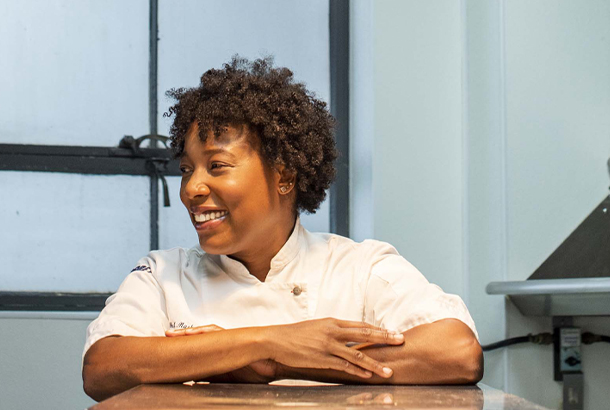
Savannah’s hidden port influence also comes through in its cuisine. At The Grey, James Beard Award–winning chef Mashama Bailey (who’s soon to open a new offshoot in Paris) serves a dish that takes diners right down to the docks: Chicken Country Captain, a traditional fragrant chicken tomato curry with veggies, almonds, and currants over white rice, is said to have sprung directly from 19th-century port trade and the way in which stevedores and sailors cooked with local meat and vegetables and imported spices. Today, it’s one of Bailey’s signature dishes, and a staple at The Grey. It is, she says, “a representation of how transatlantic foods and ingredients have influenced Southern cuisine.”
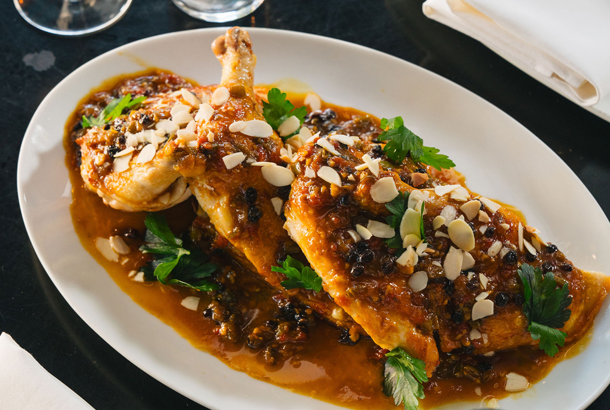
A force as influential as Savannah’s port will have impacts good and bad—the latter, in particular, when it comes to the environment. The Savannah River’s boat traffic and infrastructural development over the years have interfered with manatees, endangered sea turtles, and other flora and fauna.
Dredging the river in order to make space for ever-larger vessels leaves a deep environmental footprint, according to Southern Environmental Law Center attorney Chris DeScherer. Over the past decade, the SELC and other organizations across the South have monitored, lobbied against, and litigated over port expansions—including that of Savannah—with an eye toward conservation.
“There’s no question that the port is a significant economic engine for the state of Georgia,” DeScherer says. “At the same time, it’s important to recognize that the port has—and will continue to have—a wide range of negative impacts on the Savannah River and nearby coastal communities.” Those impacts include everything from water pollution and saltwater intrusion to wildlife habitat loss.
There’s a balance to strike: The comings and goings of these steel giants drive a notable percentage of Georgia’s revenue, creating hundreds of thousands of jobs statewide. Artist Robert Morris is focused on their redeeming qualities—not just locally, but globally.
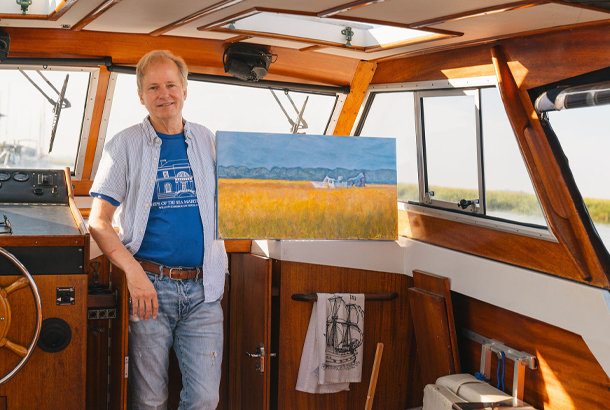
“I have, I guess you could call it, a very romantic notion of these vessels,” says Morris, a 62-year-old painter who recently retired from 20 years in the communications office at the Georgia Ports Authority. He grew up in Washington, D.C., at a time when President Jimmy Carter, a Georgia native, was working with China following its Cultural Revolution—when, Morris remembers, burgeoning economic bonds seemed to be opening up new possibilities. “I developed a very profound belief that international trade keeps the world at peace,” he says. “I really see these ships as a source of profound good.”
Morris is on the board of the Tybee Island Maritime Academy, one of the country’s few K-8 maritime charter schools, where students (his children included) learn about engineering via water displacement, environmental science via erosion, and geopolitics via world trade relations.
When he’s not busy painting or parenting, Morris can be found cruising local waterways in his vintage 34-foot Swedish yacht, exploring old shipwreck sites and salvaging artifacts. His artwork tells stories of Savannah’s past and pays homage to the big ships of today. Through next March, an exhibition titled Outward Bound at the Ships of the Sea Maritime Museum showcases his paintings of these purveyors of bulk goods and global diplomacy in all their complex beneficence.
The port has influenced Savannah’s architecture, design, art, cuisine, and culture for centuries, but it still feels so far removed from daily life for most people in the city—and getting a look at the day-to-day operation isn’t easy. As Rhett Willis, the CEO of DJ Powers, a Savannah-based U.S. Customs broker and global freight forwarder, tells me, “It was a sleepy little port here” until the 1980s and ’90s, when world trade opened up. Unlike other ports on the Eastern Seaboard, Savannah had lots of room to grow, because it was surrounded by little save for timberland and declining paper mills. In the decades since, the operation has boomed, as has the government presence, with nearly a dozen agencies, from the DEA to the USDA, keeping an eye out for illegal cargo.
“What’s happened now is that ports are very, very busy,” Willis says. “Security is tight. In the old days, you could drive down, go on board the ship, and talk to the captain. One, you can’t do that anymore, and two, if you get on the port and you don’t know what you’re doing, you’re going to get run over. Every bit of space is utilized. It’s very efficient—and there’s no room to go down there and knock around.”
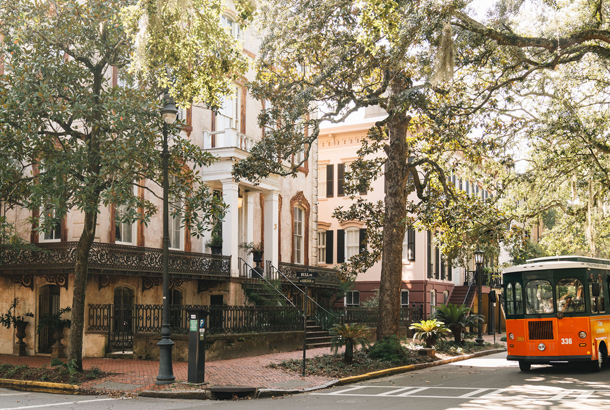
Despite this, two years after my husband and I sold our home in Savannah and moved away, I finally do get the chance to satisfy my curiosity and pass through the Port of Savannah’s (high-security) gates. Willis was right; there would be no knocking around. In an orange vest and a hard hat, buckled into the passenger seat of Edward Fulford’s car, I get an extremely structured, efficient, safety-first tour. The activity is dizzying: massive ships stacked with cargo, hundreds of rubber-tired gantry cranes, 34 ship-to-shore cranes with thick extension cords on big red spools that unwind as they run up and down the shoreline on tracks, a small army of rail-mounted cranes loading and unloading cargo onto trains that fan out across the U.S.
The operation is growing fast, Fulford explains: Nearly $2 billion was recently dedicated to the addition of more capacity, equipment, and infrastructure. The ships that carry the goods keep getting bigger, too. In Fulford’s 12 years on the job, cargo vessels have nearly doubled in capacity; the largest ones we see here now each have space for 16,000 20-foot containers.
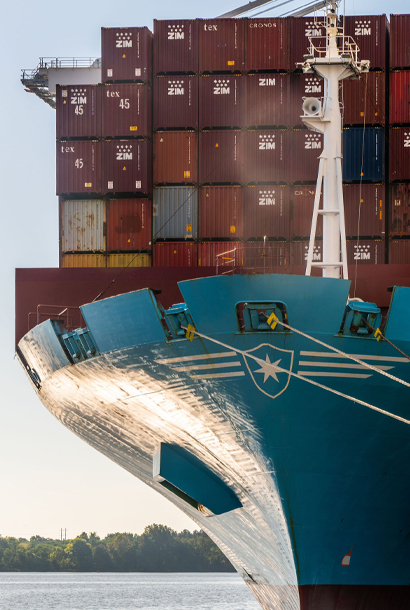
Just a few years ago, all this, to me, was just a bunch of commercial activity taking place on a plot of land too removed from my Savannah existence to think twice about. In a way, though, it’s also the curry and currants in Chicken Country Captain, the dolphin downspouts along Bull Street, the ballast-stone pavers at the waterfront. It’s the ghost stories, the pirate lore, the legacy of people being shanghaied off River Street as recently as the 1920s. It’s the design details in Savannah’s most iconic homes, from the 18th-century English furniture to the haint-blue porch ceilings painted by the descendants of Africans brought here by the slave trade.
As the port industry grows, so too does the city, finding new ways to share these stories. After the tour, I make my way back to my digs at the Thompson Savannah. Here, I find cargo ship–inspired art on the walls of the Stevedore Bakery, Chicken Country Captain spring rolls on order in the lobby, guests and patrons at Bar Julian running to the windows as Malta’s Tysla—with its teal stripe and its owner’s name, Wallenius Wilhelmsen, written in big block print nearly 400 feet wide—glides past. The tugboats buzz about: the Cooper Moran, Dennis Moran, and Diane Moran. The river pilots are over there too, working their interesting, sometimes dangerous jobs, ferrying along the goods we use, eat, and wear every day, and hardly anyone knows they’re there. It’s bittersweet, I think, to learn so much about a place—to connect so many of the seemingly disparate dots that make this city what it is—after leaving it. Getting to know Savannah better, I’ve come to miss it even more.


